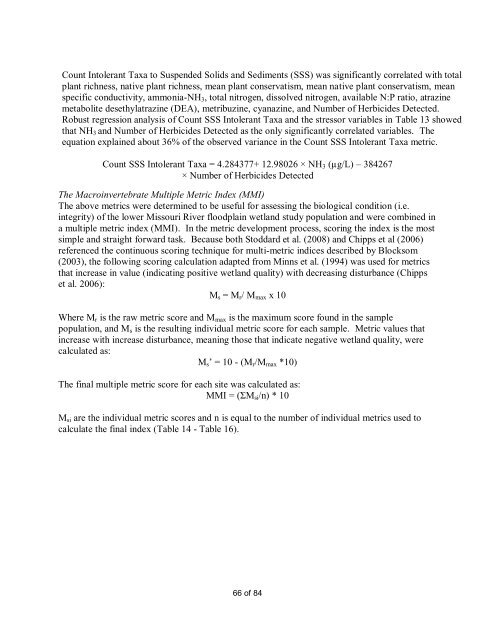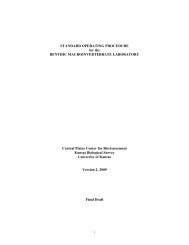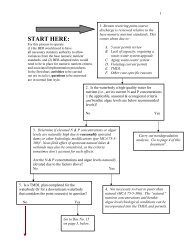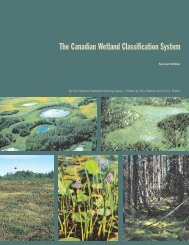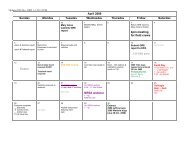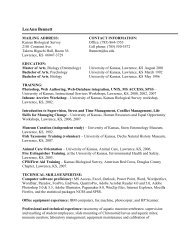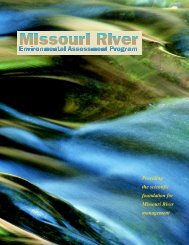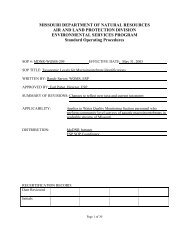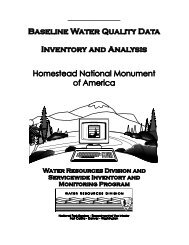Koontz, J., D.G. Huggins, C.C. Freeman, D.S. Baker - Central Plains ...
Koontz, J., D.G. Huggins, C.C. Freeman, D.S. Baker - Central Plains ...
Koontz, J., D.G. Huggins, C.C. Freeman, D.S. Baker - Central Plains ...
You also want an ePaper? Increase the reach of your titles
YUMPU automatically turns print PDFs into web optimized ePapers that Google loves.
Count Intolerant Taxa to Suspended Solids and Sediments (SSS) was significantly correlated with total<br />
plant richness, native plant richness, mean plant conservatism, mean native plant conservatism, mean<br />
specific conductivity, ammonia-NH3, total nitrogen, dissolved nitrogen, available N:P ratio, atrazine<br />
metabolite desethylatrazine (DEA), metribuzine, cyanazine, and Number of Herbicides Detected.<br />
Robust regression analysis of Count SSS Intolerant Taxa and the stressor variables in Table 13 showed<br />
that NH3 and Number of Herbicides Detected as the only significantly correlated variables. The<br />
equation explained about 36% of the observed variance in the Count SSS Intolerant Taxa metric.<br />
Count SSS Intolerant Taxa = 4.284377+ 12.98026 × NH3 (µg/L) – 384267<br />
× Number of Herbicides Detected<br />
The Macroinvertebrate Multiple Metric Index (MMI)<br />
The above metrics were determined to be useful for assessing the biological condition (i.e.<br />
integrity) of the lower Missouri River floodplain wetland study population and were combined in<br />
a multiple metric index (MMI). In the metric development process, scoring the index is the most<br />
simple and straight forward task. Because both Stoddard et al. (2008) and Chipps et al (2006)<br />
referenced the continuous scoring technique for multi-metric indices described by Blocksom<br />
(2003), the following scoring calculation adapted from Minns et al. (1994) was used for metrics<br />
that increase in value (indicating positive wetland quality) with decreasing disturbance (Chipps<br />
et al. 2006):<br />
Ms = Mr/ Mmax x 10<br />
Where Mr is the raw metric score and Mmax is the maximum score found in the sample<br />
population, and Ms is the resulting individual metric score for each sample. Metric values that<br />
increase with increase disturbance, meaning those that indicate negative wetland quality, were<br />
calculated as:<br />
Ms‟ = 10 - (Mr/Mmax *10)<br />
The final multiple metric score for each site was calculated as:<br />
MMI = (ΣMsi/n) * 10<br />
Msi are the individual metric scores and n is equal to the number of individual metrics used to<br />
calculate the final index (Table 14 - Table 16).<br />
66 of 84


